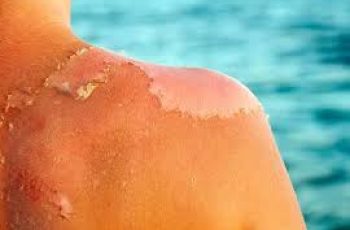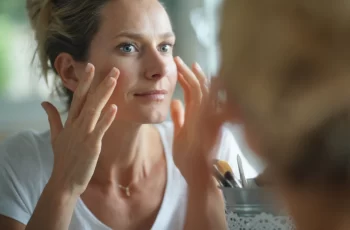
Understanding Retinol Percentages and Retinoid Strengths: A Comprehensive Guide
Retinoids, a class of compounds derived from Vitamin A, are widely celebrated in dermatology and skincare for their remarkable ability to improve skin texture, reduce wrinkles, treat acne, and even out skin tone.
However, retinoids come in various forms, strengths, and concentrations, which can often confuse both new users and experienced skincare enthusiasts alike.
Knowing which retinoid to use, at what strength, and how to incorporate it into a skincare routine is essential to achieve optimal results while minimizing potential irritation.
As a dermatologist, I always recommend starting patients on a low-strength retinol and gradually increasing the concentration over time.
This methodical approach helps the skin adjust to the retinoid, reduces side effects like redness and peeling, and ensures better long-term adherence.
This guide will help you understand the different types of retinoids, their relative strengths, and how to choose the right concentration for your skin type and concerns.
What Are Retinoids?
Retinoids are a family of Vitamin A derivatives that exert their effects by binding to retinoic acid receptors (RARs) in skin cells.
This interaction influences gene expression and accelerates cellular turnover, resulting in fresher, smoother, and healthier-looking skin. The retinoid family includes:
Retinyl Palmitate: The weakest and least potent form, often found in over-the-counter cosmetics.
Retinol: A popular and effective over-the-counter retinoid that requires conversion in the skin to retinoic acid.
Retinaldehyde (Retinal): One step closer to retinoic acid, offering more potency than retinol but generally causing less irritation than tretinoin.
Adapalene: A synthetic retinoid available OTC and by prescription, known for acne treatment.
Trifarotene: A newer retinoid with high potency, prescription-only, primarily for acne and aging.
Tretinoin (Retinoic Acid): Prescription-strength retinoid, well-studied for anti-aging and acne.
Tazarotene: The strongest retinoid currently available by prescription, used for acne and psoriasis.
Understanding Retinoid Strength and Potency
One common misconception is that the percentage concentration on a product label directly reflects the product’s strength or potency. This is not always true.
For example, 0.025% tretinoin is far more potent than 0.025% retinol because these molecules act at different stages in the Vitamin A metabolic pathway.
The strength and effectiveness of a retinoid depend on multiple factors:
Type of Retinoid: Some retinoids, like tazarotene, are inherently more potent than others, like retinol or retinaldehyde.
Concentration: Within each type, higher percentages generally mean stronger effects but also greater risk of irritation.
Formulation: Creams, lotions, gels, and ointments deliver retinoids differently, affecting absorption and potency.
Packaging: Products in airless pumps or opaque containers retain potency better than jars exposed to light and air.
Additional Ingredients: Penetration enhancers such as hyaluronic acid and glycerin can increase absorption.
Usage Routine: Applying retinoids before or after moisturizer, and using occlusive agents like oils afterward, can modify how much retinoid penetrates the skin.
Retinoid Strength Hierarchy: From Weakest to Strongest
Here is a simple hierarchy of retinoid potency, from the least potent to the most potent:
Retinyl Palmitate: Least potent, poor skin penetration, often just a skin-conditioning agent.
Retinol: Widely used OTC ingredient, effective with consistent use.
Retinaldehyde (Retinal): More potent than retinol, converted more rapidly into active retinoic acid.
Adapalene: Prescription and OTC retinoid, effective especially for acne.
Trifarotene: Newer prescription retinoid with high potency.
Tretinoin: A classic prescription retinoid, stronger than adapalene and retinol.
Tazarotene: The strongest retinoid available by prescription.
Retinol Percentages: What Do They Mean?
Retinol products usually come in concentrations ranging from 0.025% to 1%, with the following general guidelines:
Low Strength Retinol: 0.025% – 0.03%
Ideal for beginners or those with sensitive skin, these concentrations help minimize irritation.
Medium Strength Retinol: 0.05%
Suitable after the skin has acclimated to low-strength retinol, offering more noticeable results.
High Strength Retinol: 0.1% to 1%
These are powerful over-the-counter concentrations that provide significant anti-aging benefits. The 1% retinol, often called 10x retinol, is the strongest available without a prescription.
Important: Despite rumors, retinol concentrations above 1% (such as 2%, 2.5%, or 3%) are generally not effective or properly formulated and may not deliver additional benefits.
Prescription vs. Over-the-Counter Retinoids
Over-the-Counter (OTC) Retinoids: Retinol is the most common OTC retinoid. The highest OTC retinol concentration available today is 1%.
These are effective for anti-aging and mild acne but require time to convert in the skin to retinoic acid.
Prescription Retinoids: Tretinoin and tazarotene require a prescription. Tretinoin is stronger than retinol and comes in various concentrations (0.025%, 0.05%).
Tazarotene is even more potent and available in strengths from 0.01% up to 0.1%.
How to Choose the Right Retinol Strength for Your Skin
Selecting the right retinoid strength depends on your skin type, concerns, and prior experience with retinoids:
Beginners or Sensitive Skin: Start with 0.025% or 0.03% retinol. Use sparingly at first (1-3 times per week), gradually increasing frequency.
Normal to Moderate Skin Tolerance: Move up to 0.05% retinol after a few weeks or months, once your skin is no longer irritated.
Experienced Users: High strength retinol (0.1% or 1%) can be introduced after acclimatization.
Seeking Prescription-Strength Results: Dermatologists may prescribe tretinoin or tazarotene for stronger effects and faster results.
Always increase retinoid strength slowly under medical guidance to avoid irritation.
How Formulation Affects Retinoid Strength
The formulation of a retinoid product significantly impacts its effectiveness:
Creams: Typically gentler but less absorbent.
Lotions: Balance between hydration and absorption.
Gels: More potent due to better skin penetration.
Ointments: Most occlusive and potent, sealing in the active ingredient for maximum effect.
Additionally, formulations containing hyaluronic acid, glycerin, or other penetration enhancers can improve absorption and reduce irritation.
When and How to Use Retinoids for Best Results
Retinoids are best applied at night, as they can increase sun sensitivity and degrade when exposed to sunlight. Apply retinoids after cleansing but before moisturizing.
Using a moisturizer or oil afterward can help reduce irritation and improve absorption (known as “slugging”).
Avoid using retinoids on broken or irritated skin, and always wear broad-spectrum sunscreen during the day when using retinoids regularly.
Common Side Effects and How to Manage Them
Retinoids can cause dryness, redness, peeling, and irritation, especially in the first few weeks. To minimize side effects:
Start with low concentration.
Use every other night or less frequently initially.
Apply moisturizer before or after retinoid.
Avoid combining with other irritating products like exfoliating acids early on.
Consult your dermatologist if severe irritation occurs.
Summary: What Strength of Retinol Should You Use?
New to retinoids: Start with low strength retinol (0.025%-0.03%).
Intermediate users: Progress to medium strength (0.05%).
Experienced users: Consider high strength retinol (0.1% or 1%) or prescription retinoids.
For strong anti-aging and acne treatment: Prescription tretinoin or tazarotene are the best options.
Always increase strength gradually, and follow professional advice.
Final Thoughts
Retinoids are powerful tools for skin rejuvenation, but their effectiveness depends on understanding the differences in strength, formulation, and individual skin response.
Starting slowly with a low strength retinol, using a proper formulation, and protecting your skin with sunscreen are key to enjoying the benefits safely.
If in doubt, consulting a dermatologist will help you find the right retinoid and strength tailored to your unique skin type and goals.


